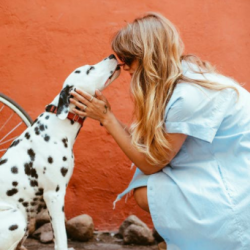
Puppy obedience training should begin before they are 3 months old. By this time your dog should understand his surroundings and be well-adjusted. If you wait until your puppy is 3 months or older you may be missing out on a wonderful opportunity.
The killer of bad habits is to allow them to develop while they are young. After all, you would not allow a 5-month old baby to run before it was 3 months old, would you? If you do not start the obedience training of your young puppy now, you will find that it is a lot harder to unlearn the bad habits than it is to relearn the good habits, and you don’t want a puppy to tear up your house causing you to have to do a home remodel to fix on the chewed on banisters and scratched walls.
The best way to determine the age of your dog is to figure out the shoulder-to-chest measurement from the ground to the top of the shoulder. The top of the shoulder is the highest point in the dog’s body. From the ground to the top of the shoulder is approximately 2 inches. From the ground to the feet is approximately 1.5 inches. From the feet to the hock joint is approximately 1.25 inches. From the hock joint to the tail is approximately 1 inch. Therefore, if your dog has a body length of 27 inches from the ground to the top of its shoulder, the length of his body is approximately 56 inches. If your dog has a body height of 24 inches from the ground, the height of the dog is approximately 52 inches.
You should be aware of the following:
For each month of your dog’s age in months, add an inch to your figure for the month of your dog’s ideal weight. For example, a 2 month old dog should weight correctly at 36 pounds. If your dog is 3 months old, you should weigh 40 pounds. Now you can use these figures to calculate the correct weight for your dog. Type of food you feed your dog is a vital role in determining the weight of your dog. Don’t feed your dog any kind of food that is low in fat and high in protein. If you do feed your dog such food, you will put your dog on a diet that is going to make him fat and lazy. The consequence of being overweight to a dog is the same as it is to a human. It causes joint pain, disease and a shortened lifespan. If your dog is suffering from joint pain, see your doctor immediately.
If your dog is a working dog, energize him before you start any exercise schedule. A dog that is sluggish or listless when you come home at lunchtime is usually the one that was not given much exercise earlier in the day. Your dog will eat when you get home and will likely be out of breath. Don’t be surprised if your dog is out early in the morning and later in the evening. If your dog is a puppy, it probably didn’t get a lot of playtime early on either. Puppies have soft stomachs, but very little energy.
So, what type of food should you feed your dog? Low calorie, grain-free food is best. You can also try giving your dog smaller amounts of food more often. Give your dog a few doggy treats occasionally. You can’t feed your dog as much as it wants to eat (or the food tastes too bad to the dog), so it is a sensible plan to decrease the amount of food you feed your dog until eventually he stabilizes at a healthy weight.
There are supplements that you can give your dog if he has lost his appetite. If you feed your dog a diet that is low in nutrients, your dog will need a growth formula that is high in protein. Or, if your dog does not digest all of his food very well, he might need an extra source of carbohydrates to make up for his difficulty digesting his food.

